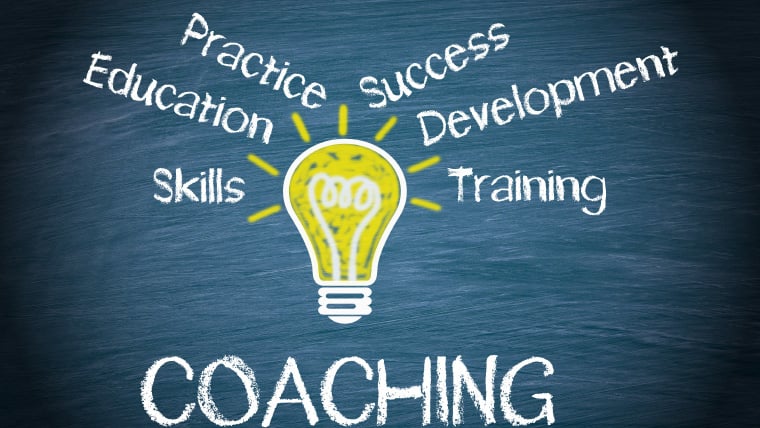What’s the difference between prioritization and compartmentalization? One entails putting things in order while the other means putting them into categories. You need these skills, and so do your teams, especially in a time where we’re working more hours and maintaining fewer boundaries between work and personal life. How can you strengthen your ability to do both — to organize your most important work and to let it go when the time is right?
Prioritization: Setting The Goals You Need to Succeed
You’ve probably attended a training or workshop focusing on OKR (objectives and key results), MBO (management by objectives) or SMART goals. Prioritization strategies and tools abound and are easily accessible, yet we’re still not prioritizing properly. The problem then is clearly in the doing, not in the knowing. This happens because we overlook an integral component of prioritization: It’s impossible to prioritize if a clear goal is not present.
You may feel constrained to wait for leadership initiatives to trickle down and set your goals for you. In the meantime, you still have responsibilities to manage and goals to meet. In the absence of clarity from above, step into the leadership void with your vision and set your goals accordingly, then adjust as you gain additional feedback/insight.
Compartmentalization: Sectioning Your Life and Avoiding Distraction
While prioritization is touted as a critical skill even as it’s undermined, compartmentalization is just as important a skill and can be even more challenging to develop. To be blunt, if we don’t compartmentalize, we are not going to make it.
Stress, fatigue and burnout are inevitable in the current work environment. We continue to see boundaries broken down year after year, with the tumult of the past year demolishing any remaining pretense of separation between our work and personal lives.
If the biggest challenge for prioritization is a lack of clear goals, what’s the biggest challenge for compartmentalization? Overcoming distraction.
The Impact Distraction Has on Our Ability to Compartmentalize
We talk often about the external distractions that leave us half-present in conversations and relationships — constant push notifications, chats, texts, status updates and so on. We would be best served to turn those off at specific intervals and times of the day so we can be more productive and satisfied.
In her book, Quiet: The Power of Introverts in a World That Can’t Stop Talking, Susan Cain recounts findings from the famous Coding War Games, a study designed to identify the characteristics of the best and worst computer programmers. Researchers found that “top performers overwhelmingly worked for companies that gave their workers the most privacy, personal space, control over their physical environments, and freedom from interruption.” These insights can be applied to other industries, too. When your mind races at 2 a.m., you half-listen to your child or have a nagging feeling that there is something else you should be doing, it’s because you’ve broken down the muscle of attention.
The idea of multitasking is lauded by many business leaders, but it’s really just another version of distraction and it’s destructive because it requires a constant shifting of attention, a perpetual re-orienting of your work efforts.
People believe they can or that they should be able to multitask. When participants in our training sessions are asked whether it’s a critical skill, they all say yes. When the same participants who valued multitasking are asked whether they’re good at it, they all admit they’re not. And they’re not meant to be, even though our work culture ingrains this concept into all of us. We are moving so fast we rarely pause long enough to see if the skills we are attempting are even skills that build either capacity or efficiency.
Multitasking isn’t some elusive skill. It’s really just fast and frequent context switching, which lowers your ability to produce good work or to truly evaluate your efforts. Studies show multitasking is ineffective, promotes anxiety, trains the muscle of distraction and dumbs us down.
Compartmentalization, then, is handling each task in its own time with increased focus and minimal distraction. Then, when you’ve successfully handled it, let go so you can dedicate yourself to your next area of responsibility.
The Connection Between Prioritization and Compartmentalization
We need to prioritize to understand what’s truly important and meaningful. We need to compartmentalize to keep the important items we’ve identified from bleeding over into each other, preventing us from ever truly regenerating or recharging. Here are a few tips for doing so:
- As you rank priorities, communicate them to your team. Ensure your team members know which tasks are most important but also that their well-being and energy reserves are just as critical as any specific task/item on your list.
- Normalize boundaries. Encourage your team members to also set boundaries, so everyone has the same opportunity for compartmentalization.
- Don’t overwhelm your team members with technology. Choose one tool that works for everyone, then reduce the mental workload that comes from context switching between platforms.
- Model the behavior you want to see. If you want your team members to compartmentalize and recharge outside of work, don’t email them at 11 p.m. If you want them to talk about issues they’re facing, set an example by sharing your own challenges and asking for the help/support you need.
As you lead your team, you need to acknowledge reality: You are working in one of the most difficult work eras in history. Your time is precious and finite. Your energy (and the energy of your team) needs to be allocated to the things that matter — that’s work, but that’s also relationships and health. If you agree with that core premise, getting really good at organizing your work and letting go of it will separate you as a true leader regardless of your position and will serve you anywhere
Andrew Deutscher is the founder and CEO of Regenerate. For over a decade, he has worked with a variety of high-performance disciplines from professional athletes to the US Air Force, translating cutting edge strategies for sustained energy and performance to applicable life strategies for high pressure career professionals. In a world of rising demands and increased obligations, he’s helped thousands of managers, leaders, and executives shift from reactive to proactive to recapture their days and win back their lives.



